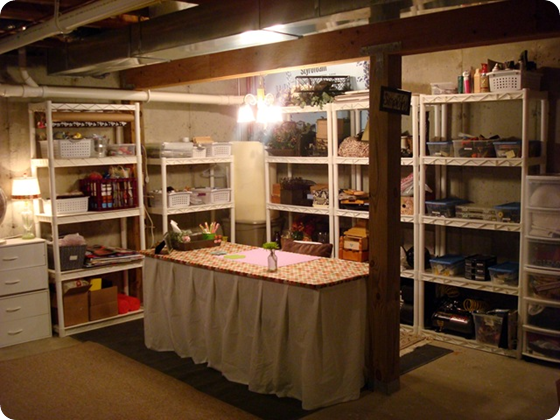Friday, December 31, 2010
Favorite Doses of 2010
Hasppy New Year!
"Crash Tax" Ripoff Expands in California and New York
Please consider 'Crash taxes' are growing in popularity among cash-strapped California cities
At least 50 cities in the state have adopted so-called crash-tax laws allowing local governments to seek reimbursement from insurance companies for the costs of sending public emergency crews to accident scenes. The fees can amount to hundreds or even thousands of dollars. If insurers don't pay, cities can hire collection agents to seek payment from the motorists involved.The gall of Rick Benner of Fire Recovery USA and Costa Mesa Fire Battalion Chief Bill Kershaw infuriates me.
Sacramento, with nearly half a million residents, soon could be the largest city in California to do so. The City Council has scheduled a vote next month to establish what it's calling a "fire cost recovery charge." The fee would reimburse the city for a variety of emergency-related chores, including cleaning up hazardous fluids, putting out vehicle fires and responding to gas line explosions and downed power poles. Proposed fees would range from $432 for a "scene stabilization" to $2,275 for a helicopter evacuation. The measure is expected to raise as much as $500,000 a year, city spokeswoman Linda Tucker said.
"To me, it's an outrage. We're already paying these people � the police department, the fire department, the emergency vehicle drivers � handsome salaries and benefits," said Lew Uhler, president of the National Tax Limitation Committee. "Either we stop this kind of nonsense or we should quit paying taxes for these kind of services."
The practice isn't limited to cities in struggling California. It's gaining momentum nationwide as cash-strapped communities seek a way to offset budget cuts.
This month, New York Mayor Michael R. Bloomberg proposed charging drivers there as much as $490 when firefighters respond to an accident or a vehicle fire, beginning July 1. A public hearing is set for January.
Local taxpayers shouldn't have to pay for accidents they had no part in creating, said Costa Mesa Fire Battalion Chief Bill Kershaw.
"Someone has to pay for the cleanup," he said. "We're subsidizing the insurance companies" if cities don't collect from the responsible parties.
At least 10 states, including Florida, Georgia and Pennsylvania, have already banned the collection of accident-response fees, according to A.M. Best Co., an independent insurance information service based in Oldwick, N.J.
But California cities and the companies they hire to collect accident fees are gearing up for a fight. The Strickland bill would prohibit local governments from collecting for all types of emergency services, including fire, police and medical, they said.
Such a ban "could devastate city services and economic health," the League of California Cities said in a letter to lawmakers.
Insurance companies are trying to harness populist antitax sentiment, typified by the "tea party" movement, to protect their own profits, said Rick Benner, chief financial officer of Fire Recovery USA.
Firefighters together with police unions they have bankrupted most cities in the nation. Public union firefighters and police (in general) are the most overpaid undeserving ungrateful ingrates the country has ever known.
Those statements will annoy many, but it is the truth, in general, especially for the larger cities. If you are a small town police officer or firefighter with few benefits then what I said may not apply to you.
I would gladly support collection measures if tax dollars did not already go to overbloated, untenable public union pension contracts.
Spare me the sap about how dangerous the jobs are. Please consider the 8 Most Dangerous Jobs in the World
1. Fishermen
2. Pilots and airline employees
3. Loggers
4. Structural construction workers
5. Waste management employees
6. Farmers and ranchers
7. Power-line technicians
8. Roofers
The true heroes deserving of respect and appreciation are volunteer fire departments.
The problem is expenses not lack of revenues. Cities ought to outsource both police and firefighters, the latter to volunteer departments in return for reduced or eliminated property taxes.
How many people do you think would volunteer for a few days a month in return for elimination of property taxes?
I bet enough to get rid of nearly every public union fire department in the country.
Addendum:
Please see In Praise of Volunteer Fire Departments
for an email response from a 20-year police and fire union worker, and my rebuttal to his response.
Mike "Mish" Shedlock
http://globaleconomicanalysis.blogspot.com
Click Here To Scroll Thru My Recent Post List
Credit Default Swaps PIIGS vs CINN Group (California, Illinois, New York, New Jersey)

click on chart for sharper image
Chris writes "In addition to foreign credit risk (Greece, PIIGS), I�m seeing my CINN STATE (CA, IL, NY, NJ) Credit Default Swap (CDS) composite moving higher again."
Mike "Mish" Shedlock
http://globaleconomicanalysis.blogspot.com
Click Here To Scroll Thru My Recent Post List
Housing Bubble in Norway
Dear MishInflation Adjusted Housing Prices In Norway
Thank you for your effort to spread the economic truth in the jungle of lies. The Norwegian Central Bank and the authorities has fed the bubble monster for years by keeping interest rates too low too long, and the biggest culprit, socializing credit. (We have a socialist/communist government, and have had a blend of that since 1990)
I have tried sending letters to the finance ministry, and the central bank, but no one seem to wake up. About 90 % of all households have Floating rate mortgages.
I do not blame the banks, they know they will be bailed out, and compete doling out as much money as they can to make a profit for share/bondholders with the given terms of a bailout waiting.
A picture says more than a 1000 words, and enclosed are some graphs I believe tell it all.
Sources: The blog �krakk!�
House price indices for Norway
End the central bank cartel, and we will see prosperity and peace.
Merry Christmas and a Happy New Year
Med vennlig hilsen/Best regards
Espen Johansen

Norway Homes Prices In Gold

Mike "Mish" Shedlock
http://globaleconomicanalysis.blogspot.com
Click Here To Scroll Thru My Recent Post List
Casio EX-FH100 10.1MP High Speed Digital Camera with 10x Ultra Wide Angle Zoom with CMOS Shift Image Stabilization and 3.0 inch LCD
Casio EX-FH100 10.1MP High Speed Digital Camera with 10x Ultra Wide Angle Zoom with CMOS Shift Image Stabilization and 3.0 inch LCD Review
Casio EX-FH100 10.1MP High Speed Digital Camera with 10x Ultra Wide Angle Zoom with CMOS Shift Image Stabilization and 3.0 inch LCD Feature
- 10.1-megapixel resolution; highly-sensitive CMOS sensor
- 10x Ultra Wide Angle Zoom with CMOS Shift Image Stabilization
- Capture 40 shots per second for still images (maximum image size of 9.0 megapixels and maximum shooting capacity of 30 shots)
- High-speed movie recording at up to 1,000 fps; High-resolution HD Movie function
- Capture images to SD/SDHC memory cards (not included)
Casio EX-FH100 10.1MP High Speed Digital Camera with 10x Ultra Wide Angle Zoom with CMOS Shift Image Stabilization and 3.0 inch LCD Overview
This 10.1 effective-megapixel high-speed digital camera boasts a wide-angle 24 mm 10x optical zoom lens in a compact body that makes it easy to carry anywhere. It also gives users a maximum burst rate of 40 shots per second for still images (maximum image size of 9.0 megapixels and maximum shooting capacity of 30 shots) that can now be used to photograph distant subjects thanks to the high-power zoom. It also enables up to 1,000 fps high-speed movie recording that captures motion that is ordinarily too fast for the human eye to see. The EX-FH100 allows users ranging from advanced amateur photographers to beginners to enjoy high-speed burst shooting. It is equipped with a mode dial that enables manual exposure burst shooting and also has a mode that makes high-speed burst shooting easy, a feature that sets the burst shooting speed to the optimal rate just by selecting the type of scene. Plus, enjoy high-quality photography even in dim indoor lighting by using a highly sensitive CMOS sensor.Available at Amazon Check Price Now!
*** Product Information and Prices Stored: Dec 31, 2010 06:30:10
European Sovereign Debt Crisis in Pictures; PIIGS Spreads to Germany at or Near Record Levels
Chart follow snips from German Bonds Climb in 2010 as Fiscal Crisis Roils Euro Area
German bunds climbed this year, the best performance since 2008, as the fiscal crisis that roiled the euro area�s most-indebted nations drove investors to the safest fixed-income assets in the region.Germany, Ireland, Portugal, Greece Sovereign Debt Yields
Top-rated euro-denominated securities from Austria, Germany, the Netherlands, Finland and France led gains in 2010, while the debt of Greece and Ireland, which sought bailouts this year, had the biggest losses among 26 markets tracked by Bloomberg and the European Federation of Financial Analysts Societies.
German bonds returned a profit of almost 6 percent this year, according to the Bloomberg/EFFAS data, compared with a 20 percent loss on Greek debt, a 14 percent slump in Irish securities and an 8 percent decline for Portuguese securities. Spanish and Italian bonds also made a loss as investors demanded increasing yields to own the debt of the euro area�s high-deficit nations.
As borrowing costs climbed again amid a wave of sovereign downgrades that saw Greek debt cut to non-investment grade at Moody�s Investors Service and Standard & Poor�s, Ireland opted on Nov. 28 to follow Greece, accepting an 85 billion-euro bailout. That, too, failed to prevent the spread of the debt crisis, fueling investor concern that Europe�s stronger nations may be unwilling or unable to foot the cost of future rescues.
The extra yield investors demand to hold Greek 10-year government bonds instead of German bunds, Europe's benchmark government securities, surged to a euro-era record of 973 basis points on May 7, and was at 953 basis points today. It started the year at 239 basis points. The difference in yield, or spread, between German bonds and 10-year debt from Ireland, Portugal, Spain and Italy also reached euro-era records.

click on chart for sharper image
France, Spain, Belgium, Italy Sovereign Debt Yields

click on chart for sharper image
| Sovereign Debt Spread to Germany | |||
|---|---|---|---|
| Country | Jan 01 | May 07 | Dec 30 |
| Belgium | 0.3% | 0.7% | 1.0% |
| France | 0.2% | 0.4% | 0.4% |
| Greece | 2.4% | 9.7% | 9.5% |
| Ireland | 1.4% | 3.1% | 6.0% |
| Italy | 0.3% | 1.5% | 1.8% |
| Portugal | 0.7% | 3.5% | 3.6% |
| Spain | 0.6% | 1.6% | 2.5% |
The bailouts to Greece and Ireland solved nothing. Spain and Portugal are up next. The country to keep an eye on is Italy. It is off nearly everyone's radar right now. Not mine. Italy is simply too big to bail and its spreads are creeping up.
Correction: Second chart as originally posted contained a line for Spain that was actually Portugal a second time. Now corrected.
Mike "Mish" Shedlock
http://globaleconomicanalysis.blogspot.com
Click Here To Scroll Thru My Recent Post List
Thursday, December 30, 2010
Favorite Books of 2010
Looking for Love in all the Wrong Places? Contrary Investor Examines Misguided Fed and Obama Admin. Efforts to Increase GDP Via Increased Consumption
Their analysis is always well written, so inquiring minds may wish to take a closer look.
I have permission to do occasional clips so please consider this clip from Looking For Love In All The Wrong Places?
Looking For Love In All The Wrong Places?...You are all very much aware of the change in market tone and sentiment over the last four months. Strategists and investors fretting over rapidly deteriorating macro leading economic indicators (remember the ECRI reaching levels always consistent with recession?) and contemplating the possibility of a double dip has given way to these same folks now trying to one up each other in putting forth ever higher domestic GDP growth estimates for the new year. Goldman (Jan Hatzius) has been a poster child example of this about face, but they have plenty of company. The transition is not hard to understand. With the heavy POMO started in September, followed up by QE2, and now the tax cut extension legislation that should add about $400 billion of "new" fiscal stimulus in 2011, we better have an improved outlook. Certainly THE issue as we move into 2011 is the potential for organic economic growth, or otherwise. Personally, we just can't put a big "multiple" on marginal stimulus (read borrowed money) additions to macro near term economic expansion. But this issue will not become relevant until 2011 is well underway.Explaining Fed Actions
As we see it, one of the really big keys for economic and we believe ultimately financial market performance in the new year will be first, whether corporations spend their currently amassed "savings". It's more than well known that through both operations and borrowing in a generationally low interest rate environment, corporations are sitting on top of a boatload of cash at the moment. We're already seeing the M&A deals primarily in tech and health care sectors taking place. Secondly, again if QE2 is to be effective, corporations must spend their cash domestically, and not let that cash "leak" into foreign direct investment and/or capital markets. Preferably, corporations would spend their cash domestically on productive investment. Even we'll admit, that would be bullish. And crazily enough, it would be in stark contrast to what we believe are the misguided policies of the Fed and US government over the last three years.
Right to the key point of this portion of the discussion that happens to be a question and will hopefully become clear as we look at a few longer term data points. Why has the Fed and Administration focused their monetary and fiscal policies virtually exclusively on consumption when it is productive investment that is the key to longer term sustainable economic health and ultimately growth?
The Fed and Administration are carrying out a failed longer term policy of focusing virtually exclusively on trying to stimulate consumption. Unless they change their ways, and fast, it will only be the corporate sector that can truly save the day for the longer term sustainable health of the US economy. Keep an open mind and let's walk through a bit of history.
The top clip is self explanatory. You may also remember, and we will not drag you through it again, that US credit market debt relative to GDP began a three decade acceleration in the early 1980's leading up to the recent peak of a generational credit cycle.
We believe the message of the combo chart above is as clear as a bell. As consumption became an ever larger piece of US GDP over time, the ten year rolling average of US GDP growth went into longer term rate of change decline.
The point is that debt financed consumption pressured the longer term growth rate of US GDP over time as consumption adds nothing back to the longer term infrastructure and productive capacity of the economy itself.
Now, remember that disposable income can either be consumed or saved. And it's that very savings that ends up as productive economic investment over time. So next up is a look at the US savings rate relative to the 10 year rolling average of US GDP growth over the last half century. Notice anything? Of course you do.
From the late 1950's through to the early 1980's, the US savings rate reached ever higher highs, as exactly did the rolling ten year average of US GDP growth. But once the decline in the savings rate began, so did the decline in the longer term growth rate in US GDP. Directionally these two data points are twins.
Below we're looking at the year over year change in nominal US GDP. About as simple as it gets. Alongside is the year over year change in non-residential US fixed investment. A very broad proxy for productive investment/corporate capital spending. These two data points are about as highly directionally correlated as they come. And what this clearly implies is that the longer term rhythm of the US economy is integrally tied to productive investment. Not consumption, but productive investment.
So stepping back just a bit, why have the Fed and Administration been focusing their efforts on consumption when it's clear that productive investment is the driver of longer term US economic growth? Is it consumption that allows China to grow its economy at double digits, or productive investment? Again, we know there has been over investment in China and we have too much productive capacity globally for now, as this is really a story for another complete discussion. But China never could have "arisen" economically without an important investment in long lived productive assets. You know the fiscal remedies so far stateside. Cash for clunkers, home buyer tax credits, appliance purchase rebate credits, the recent one year drop in the employee side of payroll tax rates, etc. - every single initiative focuses on consumption as opposed to investment. Again, maybe we'll look like nut balls before the current cycle is over, but Fed and Administration policies are not going to put the US on a longer term firm economic footing, especially within the context of a globalized economy. The US is not going to borrow and consume its way to prosperity. That only enriches the nations doing the actual production. We did that over the last thirty years and the rolling ten year US GDP growth report card is our reward.
Unfortunately, as opposed to supporting and encouraging this transition from reliance on consumption (in a still highly levered economy) to increasing focus on productive investment, the Fed and Administration are acting in contravention. They appear blind to the messages of history. We're scratching our heads. To be honest, we have only one answer as to why this is happening, and we sound like conspiratorial maniacs when we voice it. Consumption favors the financial sector, especially if that consumption is even partially financed.
It's simply out in the open these days that the Fed and Administration have done everything in their power to protect the financial sector in the US, even at the expense of the taxpayers and small business. The same thing is happening in Europe. Could it really be that this misguided and myopic focus on consumption as our current savior is simply an extension of that blanket of "protection" to the financial sector? Let's hope not. Let's just hope it's ignorance, ok?
The Fed is clearly beholden to the banks, especially large too-big-to-fail (TBTF) banks. Certainly the Fed may sound concerned about unemployment, but it's safe to assume the Fed's overriding concern is borrowers' ability and willingness to pay back the banks.
History shows Bernanke's idea of inflation targeting at 2% ignoring asset bubbles that build along the way is economically stupid. So why does he do it?
For the sake of argument and in deference to Occam's Razor , let's assume that all of the Fed's mistakes are out of ignorance as opposed to some conspiracy by the Fed to transfer wealth to the financial sector. Simply put, never ignore stupidity when it is a plausible answer to why something happened.
Regardless of why, nothing changes from the perspective of the Bank CEO. The TBTF banks know full well they can take enormous economic risks, secure in the knowledge the Fed will bail them out if they get into trouble.
The latest twist is Citigroup's chairman now brags that Citigroup is "Too Interwoven To Fail". Please see 98 TARP Recipients Close To Failure; Citigroup's Chairman Gives Reasons Citigroup Should Be Broken Up for details.
When profits are rising CEO and executive compensation soars. When the banks fail, taxpayers bail out the banks and shareholders take the hit. However, the CEO gets a golden parachute worth hundreds of millions of dollars. Thus, from the perspective of TBTF banks, the right thing to do is take enormous risks.
The same thing is happening in Canada right now. Please see Canadian Borrowing Gone Mad: A Look at BMO's Misguided Balance Sheet Theory and the Keep on Dancin' Market Share Theory of Toronto-Dominion for further discussion.
This process explains the massive boom bust cycles we have seen and how wealth gets increasingly concentrated into fewer and fewer hands over time.
Mike "Mish" Shedlock
http://globaleconomicanalysis.blogspot.com
Click Here To Scroll Thru My Recent Post List
Anecdotes on the Payroll Tax Cut
SBO writes ...
Hello MishThis adds to what I said in Jobs Forecast 2011 Calculated Risk vs. Mish (correcting a couple of awkward sentences).
Here's a quick note on the 2% payroll tax cut. We own a couple of small companies, each with under 200 employees. We provide health insurance to our employees, but they share the cost. We pay $300 per month per individual, and any cost above that (including cost increases) are shared 50-50. Our average salary is about $42,000. The 2% payroll tax cut will be about $70/month for the average person.
However, our health insurance cost increased by $117 per month for individuals (more for families) and that was only after altering the benefits, shopping intensively, and changing providers.
Thus, the same average employee will pay an additional $58.50/month for increased health care costs. The net additional dollars to the employee will be $11.50/month. So, spending another $70/month will all be a boost to GDP, since spending on health care is deemed consumer spending but I don't think my employees are going to feel any richer.
OK there is going to be more money in paychecks because of a reduction in Social Security collection. In response, I see ever increasing estimates as to how much that payroll tax cut will add to GDP.SBO adds another aspect I did not even consider. Some employees who share medical costs with their employer will have the payroll tax cut completely eaten up before they see a penny of it. The payroll tax cut will not be there to spend, it will have already been spent. That applies even more so to the self-insured.
However, I have to ask "How much of that payroll tax cut will go to increased sales taxes, state income taxes, and property taxes?"
I have not seen anyone properly address that question. I suggest we need that payroll tax cut to break even. Certainly taxes of all kinds are going up in Illinois. Our idiotic governor wants to hike income taxes 33%. Sales taxes will likely go up as well.
While Illinois may be an extreme example, bear in mind that places where taxes are not going up will see more layoffs.
Then there are property taxes, state income taxes, and sales tax increases to consider (or additional cutbacks in states that do not raise taxes). GDP may get a small boost from this in theory, but the overall net effect will be a decrease in jobs and the average taxpayer will not see a dime of the decrease.
Addendum:
Here is a a reader email from David who lives in North Carolina regarding the above post.
Hi Mish,Mike "Mish" Shedlock
Just read the article and thought I would offer my two cents (maybe a dollar after you finish this!) on the payroll tax cut.
I am the sole employee of my S Corp, so I am self employed. The 2% FICA cut is worth about $155 a month to me. I got my annual letter from Blue Cross stating my new rate for Health Insurance. It goes up $154 a month, so I net out $1 per month. I if see you in North Carolina maybe we can share a cup of coffee if we can find a cup for $1.
I read you blog every day along with several others I deem worthy. Really enjoy it. I am floored by stories of the public unions and pensions in other states and click on the links to read the full story. NC has no public unions, virtually no private unions, and a pension system that is solvent NC public pensions are not extravagant. These stories are unheard of in NC, not that we don't have a few of other types to tell. Our corruption is a little different.
NC is facing a 20% (3.7 billion about) hole in the state budget next year. The politicians are stating they will close it without raising taxes or borrowing, but I am waiting to see what they do. There is no way to close the budget without cutting the state payroll. Most State employees have gone without pay increases for the last two years. I suspect a number of them will be laid off unless the idea of pay cuts I am starting to hear discussed is real. The precedent is there, NC cut pay in the Great Depression to close a similar gap without cutting employees / services.
David
Chapel Hill NC
http://globaleconomicanalysis.blogspot.com
Click Here To Scroll Thru My Recent Post List
Jobs Forecast 2011 Calculated Risk vs. Mish
I think those estimates are extremely high and we will not come close to even 2.4 million jobs. I give my rationale below, but first let's see what Calculated Risk has to say.
Please consider Calculated Risk's Question #5 for 2011: Employment
The U.S. economy added about 87 thousands payroll jobs per month in 2010 through November. This was extremely weak payroll growth for a recovery. How many payroll jobs will be added in 2011?What is the Driver for Jobs?
The U.S. will add around 1.2 million private sector jobs in 2010. And this despite the construction sector losing over 100 thousand jobs in 2010 (the fourth year in a row of construction job losses).
It now appears that job creation is picking up, and it also appears that the construction sector will add employees for the first time since 2006. There were over 2 million construction jobs lost during the downturn, and a relatively small number will be added next year - but every little bit will help.
This suggests to me that private payroll employment will increase by over 2 million jobs next year, maybe as high as 3 million jobs! My guess is around 2.4 million jobs as shown on the following graph.
Of course state and local governments will probably lose some jobs, but it looks like 2011 will be the best year for private job creation since the '90s.
One question I continually ask is "What is the driver for jobs?"
Let's address that question, sector by sector, using all the major component breakdowns of job categories by the BLS, starting with the BLS Current Statistics reports for October or November (the latest graphs available).
Please click on any chart below to see a sharper image.
For all the brouhaha about the manufacturing recovery, employment in the manufacturing sector has dropped four consecutive months. Before estimating manufacturing for 2011, let's look at the long-term chart.
That does not look so pretty. Nonetheless, manufacturing averaged +10,000 jobs a month in 2010. Will 2011 look more like the first half of 2010, more like the second half, more like the long-term trend, or more like another temporary flattening out?
I will take an average of 2010 as a guess.
Manufacturing Jobs Expectation for 2011 is +10,000 per month.
January and February were a disaster for construction in 2010 so let's drop those. The average March through November is +3,000. Let's be generous and round to the nearest 5,000.

The average number of mining jobs January-October 2010 is +8,000.
Mining Jobs Expectation for 2011 is +8,000 per month.

Temporary help services was one bright spot in 2010. The January-November average is +27,000 a month. The August-November average is 31,000 a month. Let's be generous and add 4,000 jobs a month to the August-November total.
BLS has Temporary Help as a subcomponent of Professional and Business Services. It is hard to say whether or not permanent hiring takes hold but if it does it will likely be at some expense to Temporary Help.
There are no charts available for Professional and Business Services, but let's add another 10,000 jobs a month to give a total of +45,000 jobs per month for Professional and Business Services.

Retail trade was certainly all over the map in 2010. I am not sure what to make of these big swings. The average for January-November 2010 is +6,000.
Retail Trade Jobs Expectation for 2011 is +6,000 per month.

Let's discard January and February as not being representative of the year. The 9 month average March-November is 9,000.
Transportation and Warehousing Jobs Expectation for 2011 is +9,000 per month.

Financial activities is one sector that did not recover in 2010. Look for a repeat in 2011. Mortgage refinancing is falling off a cliff. I expect bank warnings about profits and lots of layoffs in this sector as a result of rising interest rates in general and mortgage rates in particular.
The average number of jobs January-November is -7,000. Look for a repeat with job losses stacked in the first half.
Financial Activities Jobs Expectation for 2011 is -7,000 per month.

The January-November average is +15,000. I think we have seen some of the restaffing we are going to get and growth in 2011 will not be as robust.
Leisure and Hospitality Jobs Expectation for 2011 is +10,000 per month.

Healthcare has been a rock solid performer throughout the recession. The one possible downside to 2011 is cutbacks at country hospitals over budget concerns. Otherwise a continuation of 2010 seems likely. The average for January-October is +20,000. Let's ignore the downside risk and be slightly generous, using the average of the latest 4 months.
Healthcare Jobs Expectation for 2011 is +24,000 per month.
The BLS groups education and healthcare together in the monthly jobs reports (why I do not know). However in these summary reports the BLS breaks out healthcare separately. There are no charts for education.
Education is one of the big wildcards. Traditionally this is a growing segment. However, cities are under a lot of pressure here. There could be losses in this component, perhaps big losses with increasing class sizes unless teachers' unions take pay or benefits cuts or unless help comes from the federal government. I am going to assume no growth in education as a middle ground.
Education Jobs Expectation for 2011 is +0 per month.
Wholesale trade is a minor jobs component. I do not have a chart, but will assume a nominal amount of growth.
Wholesale Trade Jobs Expectation for 2011 is +3,000 per month.
Information is a very minor jobs component. I do not have a chart. The last three months were -7,000, -1,000, and +1,000. Let's assume +1,000 a month.
Information Jobs Expectation for 2011 is +1,000 per month.
I do not have a chart of Other Services . The last three months were +17,000, +30,000, and -8,000. The average is +13,000.
Other Services Jobs Expectation for 2011 is +13,000 per month.

Note how local governments were still expanding mid-recession, all the way up till July of 2008. A year later, starting June of 2009, local governments finally got religion and started cutting jobs. Look for this trend to continue into 2011.
The average number of local government jobs for January-November 2010 was -21,000. Let's assume it will be the same for 2011 although there could be a disaster coming up at the local level.
Local Government Jobs Expectation for 2011 is -21,000 per month.
In spite of all the whining at the state level, states have not yet made any significant cuts in employment. The average for January-November 2010 rounded to the nearest 1,000 is 0. Let's assume there will be no net gains or cutbacks at the state level for 2011, even though I expect some losses.
State Government Jobs Expectation for 2011 is +0 per month.Total private employment January-November 2010 was +1.2 million. Total nonfarm employment was +951,000. That means 249,000 government jobs were lost so far in 2010. Of those 231,000 were local government jobs and none at the state level. Thus a net of 18,000 jobs, about 1,000 a month were lost at the Federal level. Instead, let's assume no net federal jobs for 2011.
Totals and Subtotals by Category

I come up with +127,000 private jobs a month in comparison to Calculated Risk's estimate of +200,000 jobs a month. That is quite a difference.
I have total nonfarm jobs at +106,000.
Let's do a reality check.
Monthly Job Growth 1999-2009

Chart courtesy of BLS. Annotations by me, numbers are in thousands.
The areas in deep blue mark recessions.
- At the height of the internet bubble with a nonsensical Y2K scare on top of that, the economy managed to gain 264,000 jobs a month.
- At the height of the housing bubble in 2005, the economy added 212,000 jobs a month.
- At the height of the commercial real estate bubble with massive store expansion, the economy added somewhere between 96,000 and 178,000 jobs per month depending on where you mark the peak.
Neither the housing boom, nor the commercial real estate boom is coming back. Nor is there going to be another internet revolution. If anything, outsourcing of jobs to Asia is likely to remain intense.
Finally, consider all the financial engineering jobs, banking jobs etc, that are not coming back.
I simply do not see any driver for jobs. Many of these optimistic scenarios are based on a "typical recovery". Well this is not going to be a typical recovery. Indeed, it already is not a typical recovery.
Furthermore, Europe is a basket case, the housing bubbles in Australia and Canada are popping, China and India are both overheating and will slow, and topping it off, there is a very genuine chance that the retail hiring done for the Christmas season is all we get.
Store expansion is not going to be like it was in 2006-2007.
OK there is going to be more money in paychecks because of a reduction in Social Security collection. In response, I see ever increasing estimates as to how much that payroll tax cut will add to GDP.
However, I have to ask "How much of that payroll tax cut will go to increased sales taxes, state income taxes, and property taxes?"
I have not seen anyone properly address that question. I suggest we need that payroll tax cut to break even. Certainly taxes of all kinds are going up in Illinois. Our idiotic governor wants to hike income taxes 33%. Sales taxes will likely go up as well.
While Illinois may be an extreme example, bear in mind that places where taxes are not going up will see more layoffs.
Thus, from every angle, I struggle mightily to come up with +200,000 a month. Note that I stretched in several places to be purposely optimistic, tossing out bad months at the beginning of the year, etc. If everything goes right, perhaps we can add 160,000 jobs a month, but that assumes I am way off on the education component.
If the economy does add 160,000 private jobs a month, depending on government cutbacks, the unemployment rate will barely drop, and in fact might not even drop at all.
At +100,000 to +125,000 total jobs a month, the unemployment rate will likely rise. Given all the tremendous risks, the economy might not add that.
Mike "Mish" Shedlock
http://globaleconomicanalysis.blogspot.com
Click Here To Scroll Thru My Recent Post List
Wednesday, December 29, 2010
China Slashes Rare Earth Export Quotas, Cracks Down On Illegal Mining
China cut exports last summer, then totally blocked exports to Japan last September in a border dispute with Japan and now has reduced export quotas again by 35 percent.
There is growing concern about this problem at the Pentagon and by manufacturers for obvious reasons. Please consider China's rare earths export cut spurs trade concerns
China's move to slash export quotas on rare earth minerals -- vital in a slew of high-tech products -- has raised fresh international trade concerns, and Japan's Sony Corp vowed on Wednesday to reduce its reliance on the minerals.Crackdown on Illegal Mines
China, which produces about 97 percent of the global supply of rare earth minerals, cut its export quotas by 35 percent for the first half of 2011 versus a year ago, saying it wanted to preserve ample reserves. It also cautioned that it has not decided on the quotas for the second half of the year.
The little-known class of 17 related elements is used in numerous electronic devices and clean energy technology.
Sony, maker of Bravia brand flat TVs, Vaio PCs and the PlayStation 3 videogame console, will look for ways to cut its use of rare earth elements, including developing alternative materials, Iguchi said.
Prices have surged for these minerals since authorities in Beijing slashed their rare earth exports by 40 percent this summer, saying China needed them for its economic development.
It's not that rare earth elements are that rare, but supply of the metals is limited because of production concerns, especially pollution. Unauthorized mining operations account for as much as 50% of China's rare earth exports, leaving sulfuric-acid poisoned streams and land in the wake. Over such concerns Illegal Rare Earth Mines Face Crackdown
China�s national and provincial governments [have started] to crack down on the illegal mines, to which local authorities have long turned a blind eye. The efforts coincide with a decision by Beijing to reduce legal exports as well, including an announcement by China�s commerce ministry on Tuesday that export quotas for all rare earth metals will be 35 percent lower in the early months of next year than in the first half of this year.It's nice to see this concern over pollution, but cynically, I cannot help wondering if the real goal of this crackdown is to raise prices or secure favorable trade agreements.
Rogue operations in southern China produce an estimated half of the world�s supply of heavy rare earths, which are the most valuable kinds of rare earth metals. Heavy rare earths are increasingly vital to the global manufacture of a range of high-technology products � including iPhones, BlackBerrys, flat-panel televisions, lasers, hybrid cars and wind-power turbines, as well as a lot of military hardware.
China mines 99 percent of the global supply of heavy rare earths, with legal, state-owned mines mainly accounting for the rest of China�s output. That means the Chinese government�s only effective competitors in producing these valuable commodities are the crime rings within the country�s borders.
Prices have soared for rare earth elements mined almost exclusively here in the red clay hills of southern China: dysprosium, terbium and europium. According to a new United States Energy Department report, the most important of these for clean energy is dysprosium. Its price is now $132 a pound, compared with $6.50 a pound in 2003.
In the last few months, the government has deployed helicopter patrols to spot illegal mines. Teams of dozens of police officers have conducted raids into the hills of northern Guangdong and arrested at least 100 owners and managers of rare earth mines and refineries, said a Chinese mining expert who insisted on anonymity because of the issue�s political risks. Government workers equipped with blowtorches have accompanied the police to cut apart illegal mining equipment and either seize it or distribute it to peasants for sale as scrap.
The gangs have terrorized villagers who dare to complain about the many tons of sulfuric acid and other chemicals being dumped into streambeds during the processing of ore. Illegal rare earth mining and chemical runoff have poisoned thousands of acres of prime farmland, according to the government of Guangdong Province, and have been blamed for many illnesses.
Mike "Mish" Shedlock
http://globaleconomicanalysis.blogspot.com
Click Here To Scroll Thru My Recent Post List
The top ten of �10
Well, the end is near. The end of the year that is. :)
I had a great time recapping my top ten posts last year, and this year my friend Rhoda is having a whole linky party dedicated to the biggest and best projects of 2010.
So, without further adieu, here�s my top ten of this year, based on your comments! FUN!
First up was the start of our master bedroom redo. It was all about the bedding and I splurged big time on it. Cause we really like to sleep. Like, a lot.
The previous $25 Ebay bedding:
Was replaced with new duds from Pottery Barn and Target:
We did like the old set just fine � it just didn�t fit the bed. Huh. To say we love the change is a HUGE understatement. We quite literally melt into bed every night.
There�s been quite a few more changes to the room since that post, like new lighting, drapes and accessories. You can see all of that here.
And if you want to see how I used to make our bed, click here. (It still makes me giggle to read that. And want to cry just a little bit.)
Next up was our mini family room redo:
A new HomeGoods rug made ALL the difference in the world in there! LURVE.
Next up, a project that was FREE and made such a huge difference in our dining room. I showed you how I removed this hutch:
And found the beautiful buffet underneath:
I framed out the mirror myself, and because everything else was so cheap, I splurged on those GORG lamps. (From HomeGoods. Shock.)
You and I both loved my incredible Craigslist find in the family room � it completely updated a wall from this:
To this:
My new-to-me Drexel dresser was only $100, and it is one of my very favorite pieces in our house now. And it holds a bunch of toys. All the more reason to love it. :)
I finished a long, long, LONG process of taking our builder-grade kitchen island:
To a beadboard-wrapped, cabinet-painted, Ikea butcher-blocked one:
You can see the details of the transformation here, and the updates I�ve made to our kitchen this year here.
Speaking of the kitchen, you all loved when I took our basic, white pantry door and replaced it with a glass-paneled beauty:
The (awful) night shot above shows it with the contact paper installed for privacy, and the light inside (which we wired up and I�ll show you soon!)
We have an unfinished basement that we treat as if it�s finished. We USE it. A lot. I showed you how my craft �room� looked before:
And then with some organization, fabric, and more lighting:
LOVE it! :) You can see more here.
The next one really isn�t a particular project, but it resonated with many of you (and me!). It was a post about STUFF:
My father-in-law�s passing (and the week�s after) changed me. I�ve learned a lot about the STUFF and my emotional responses to it since then, and I�ll tell you more about that soon too.
The final two projects of the year were the ones you loved the most! First, the transformation of the Bub�s nursery to a big boy (airplane) room:
It is so clean and classic and crisp � I fall in love with it again every day. You can see the process to redo that room here.
And finally, my biggest DIY project to date, that was also my cheapest. :) I love when that happens!! I took our stairs from this before:
To this, with just about $30:
Well, the stairs were $30 � the molding on the wall was a bit more later, but the whole project was still under $60. It helped that I had the paint, stain, and beautiful curved treads under that carpet. ;)
BUT�all the hard work kind of evened out the money saved. :) It took some major sweat and TIME.
I�d do it all over again though � it�s still my very favorite project I�ve tackled in our home. SO WORTH IT. You can see the whole slew of posts about the stairs here.
Well, there. you. go. The top ten projects here at TDC, determined by your comments. It�s been a GREAT year! Did you have a favorite? What did you tackle that made the biggest impact in your home/life?
Check out Rhoda�s party for inspiration for NEXT year! :) If I don�t talk to you before then, have a very, very happy, fun and SAFE New Year!!
Thank you to my sponsor!:






















